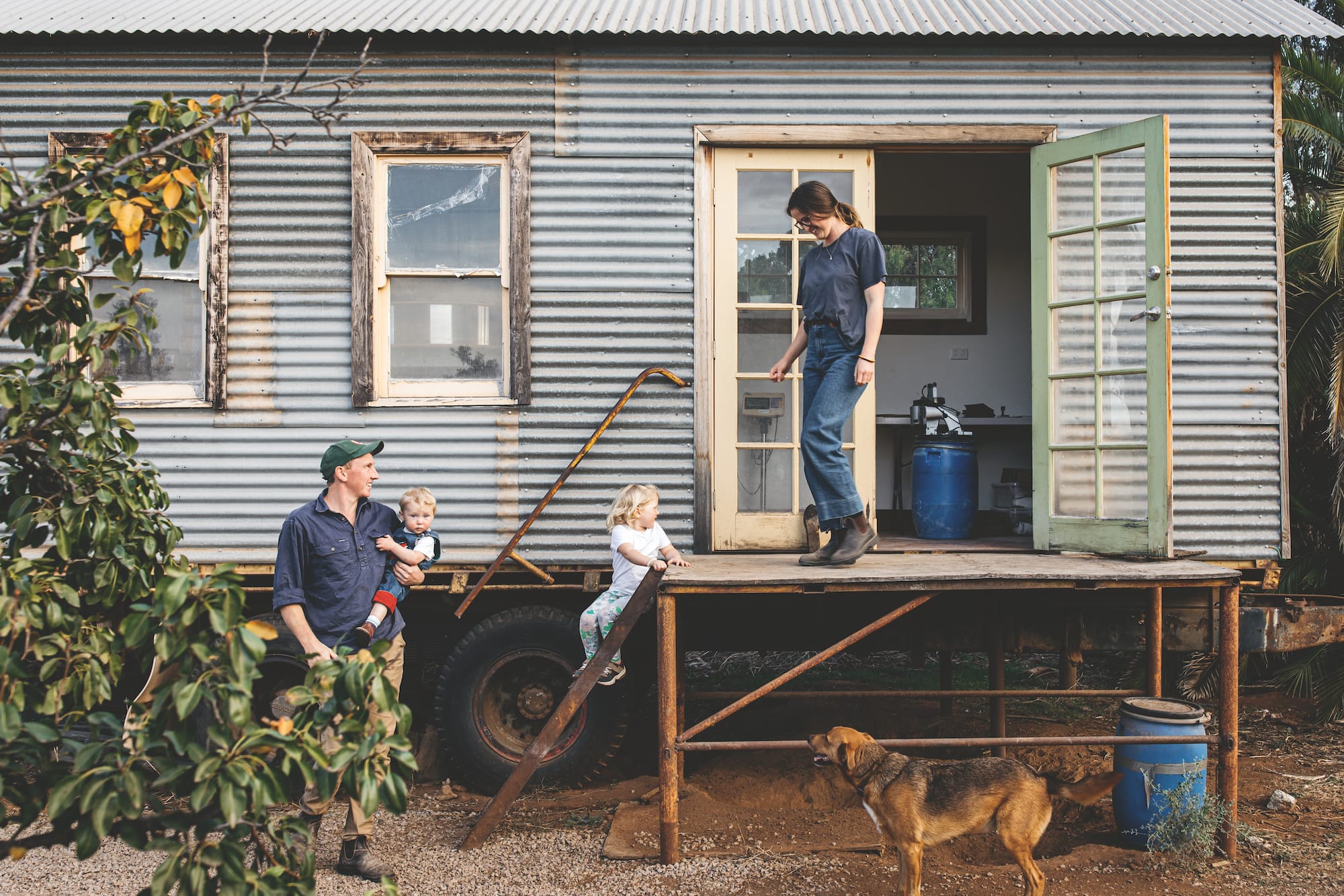
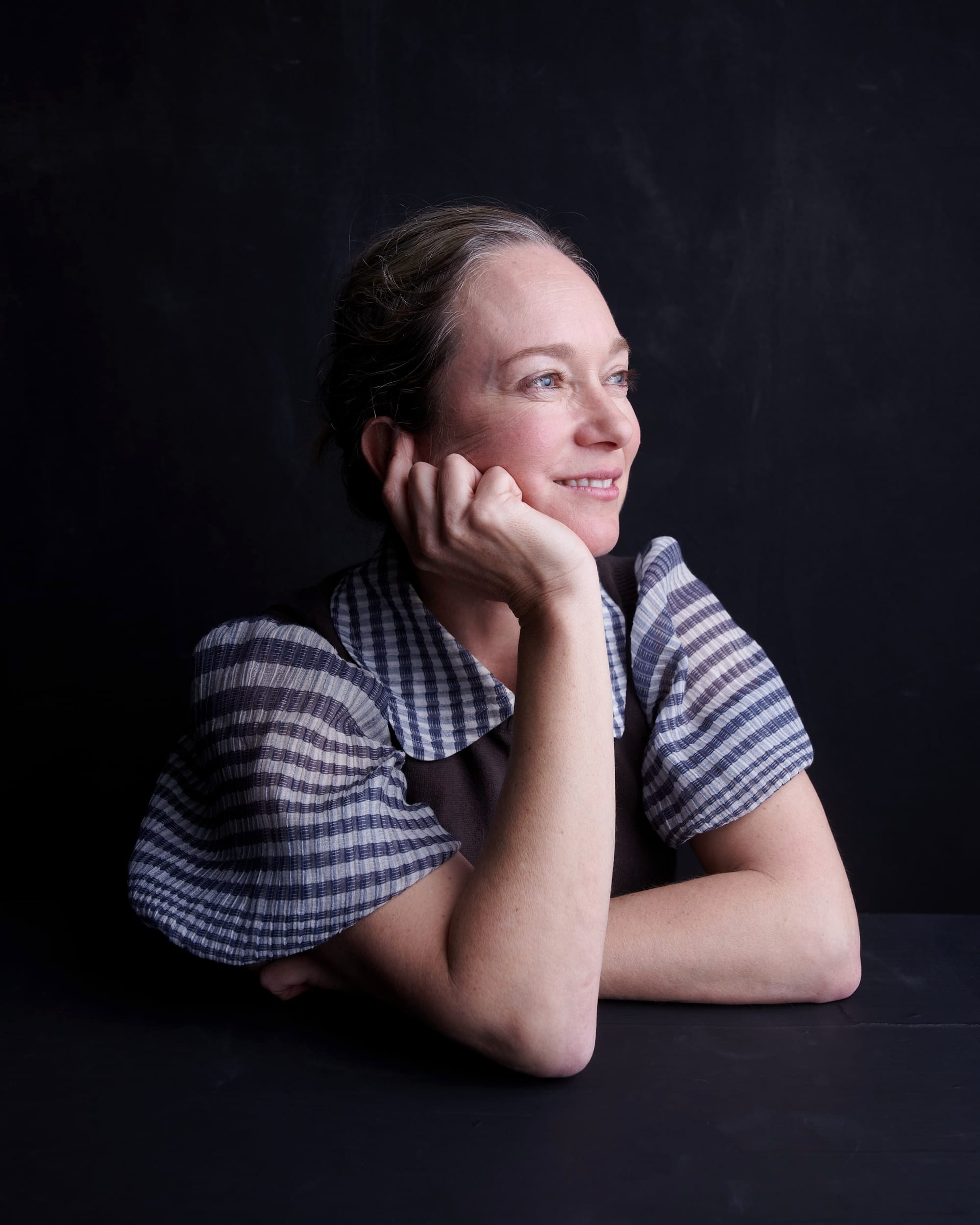
Terroir isn’t just for wine. It can be for flour too.
Words Annabelle Hickson
Photography Lean Timms
When I think of wheat farming in Australia, I picture enormous treeless paddocks of golden grains as far as the eye can see. Huge silos. Volume, efficiency, scale. I picture those captivating aerial shots of big machinery: combine harvesters with enormous 12 metre headers (you can buy 18 metre ones now) ripping through hectares of wheat at incredible pace.
Australia is good at growing wheat. And lots of it. This year Australian farmers harvested their largest ever wheat crop of more than 33 million metric tonnes, according to the Australian Bureau of Agricultural and Resource Economics and Sciences: up from the previous record of the 2017 harvest. We are the fifth largest wheat exporter in the world, with between 10 and 15 per cent of the global
wheat trade.
Wheat is bought and sold as a commodity at prices set by international market forces. Farmers don’t set the price, they accept it. Some years, if America has been in drought and the Russians have had a long winter, the price is good. Other years there’s wheat everywhere and the price is low. Either way, it’s an industry that values high yields and low costs. The grains are graded for quality and measured for things like colour, hardness and protein content, but taste is not on the list of things to be measured. The commodity grain market is not concerned with taste.
But Courtney Young and Ian Congdon are.
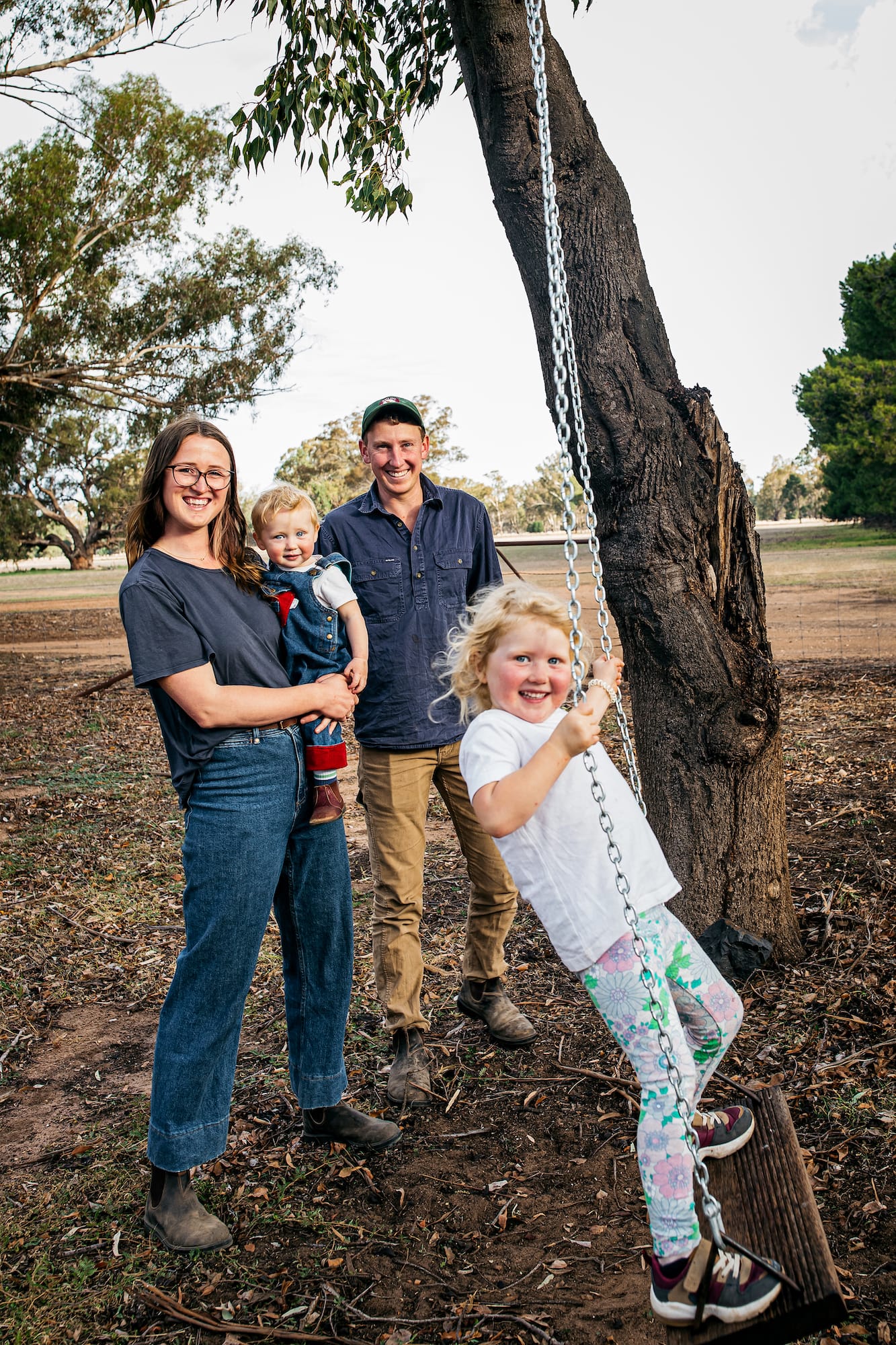
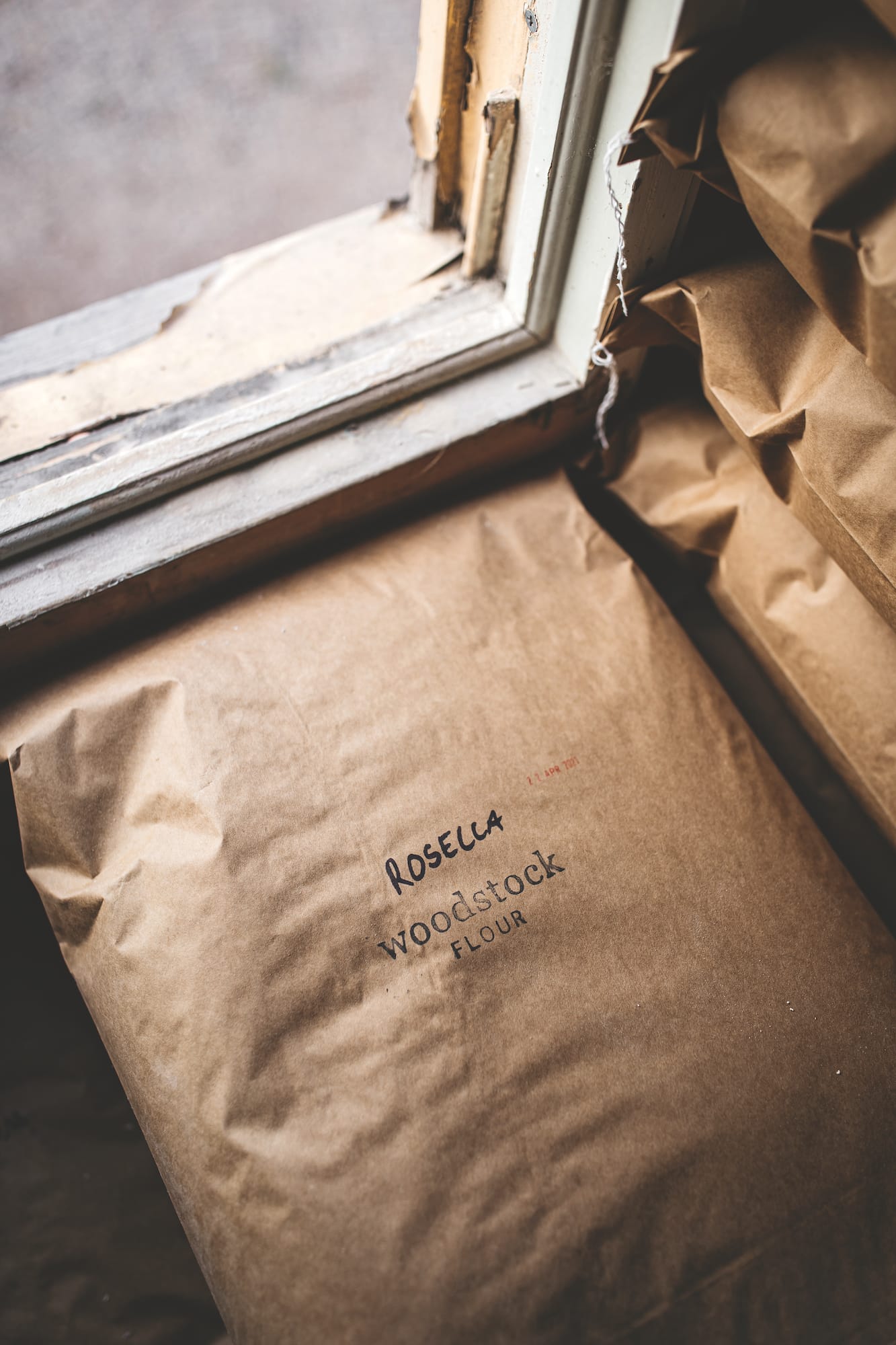
This farming couple decided to value wheat in a different way. They want organic grain grown on Ian’s parents’ farm, near Berrigan in the New South Wales southern Riverina, to be valued as food. Specifically,
food that tastes good. So instead of selling wheat as a commodity, they bought a stone mill from the US, built a little hut in which to house it on top of an old truck bed next to the farm sheds, and they started milling the grain into flour themselves. The couple only mill wholegrains, so there is no waste.
Now the wheat leaves the Congdon’s farm as a branded food product: freshly milled flours segregated by grain type in thick brown paper bags. There’s Rosella flour for cakes made from the 1980s Rosella biscuit wheat that has become popular again thanks to the udon noodle market. Then there’s the heavier Spitfire variety for breads. They also mill spelt, rye and triticale—a wheat/rye cross—as well as grains from other farmers. Each flour has a distinct protein content, but also a distinct smell and taste. And there’s a noticeable flavour difference, even between the same varieties grown on different farms, according to Courtney. The hut, on the truck that houses the mill and bags of just-milled flour, smells floral. The bees agree, flying in to load up their legs with the sweet smelling flour dust. ‘We take their honey to put on our bread and they take our flour to make their honey,’ says Ian.
Courtney and Ian’s Woodstock flour brand is part of a growing local-grain economy—including vertically integrated oat producers like Dad’s Oats in north central Victoria; single-origin Voyager Craft Malt in the Riverina; and other flour millers such as Wholegrain Milling in Gunnedah and Woods Organic Flour Mill in Inverell—that is slowly but surely finding its feet.
‘The way I understand the local grain economy is that it’s about trying to appreciate where grains come from and connect them to a place,’ says Courtney. ‘It’s about celebrating the diversity of grain and viewing it in a similar way that you would wine. Australia produces a lot of fantastic wheat. There’s no reason why we can’t have the same sort of appreciation for it as we do with our wine production.’
The Australian flour manufacturing industry is highly concentrated, with the top four players capturing over 80 per cent of the market. While Manildra Group, the biggest, processes one million tonnes of wheat a year, Ian and Courtney mill about 50 tonnes a year.
Although it’s a fraction of the big players, it’s a scale that’s big enough to allow them to supply high-end bakeries, including Tivoli Road Bakery in South Yarra (they describe Woodstock flour as some of the best in Australia); a number of retail stockists; and their direct customers at farmers’ markets and online. (The flour I buy from them arrives, freshly milled, in the post in five kilogram bags. It smells alive.) But it’s a size small enough to manage themselves.
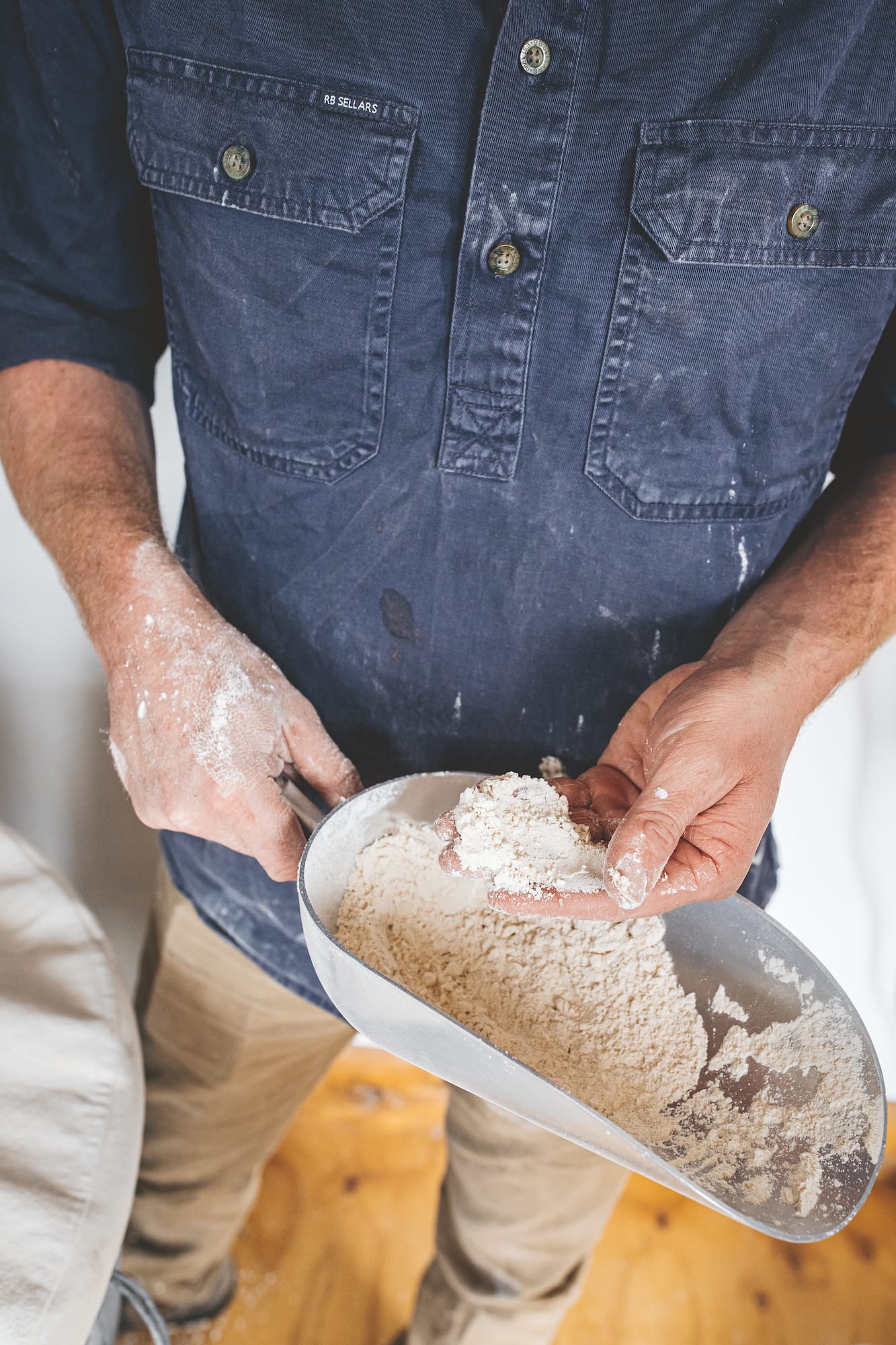
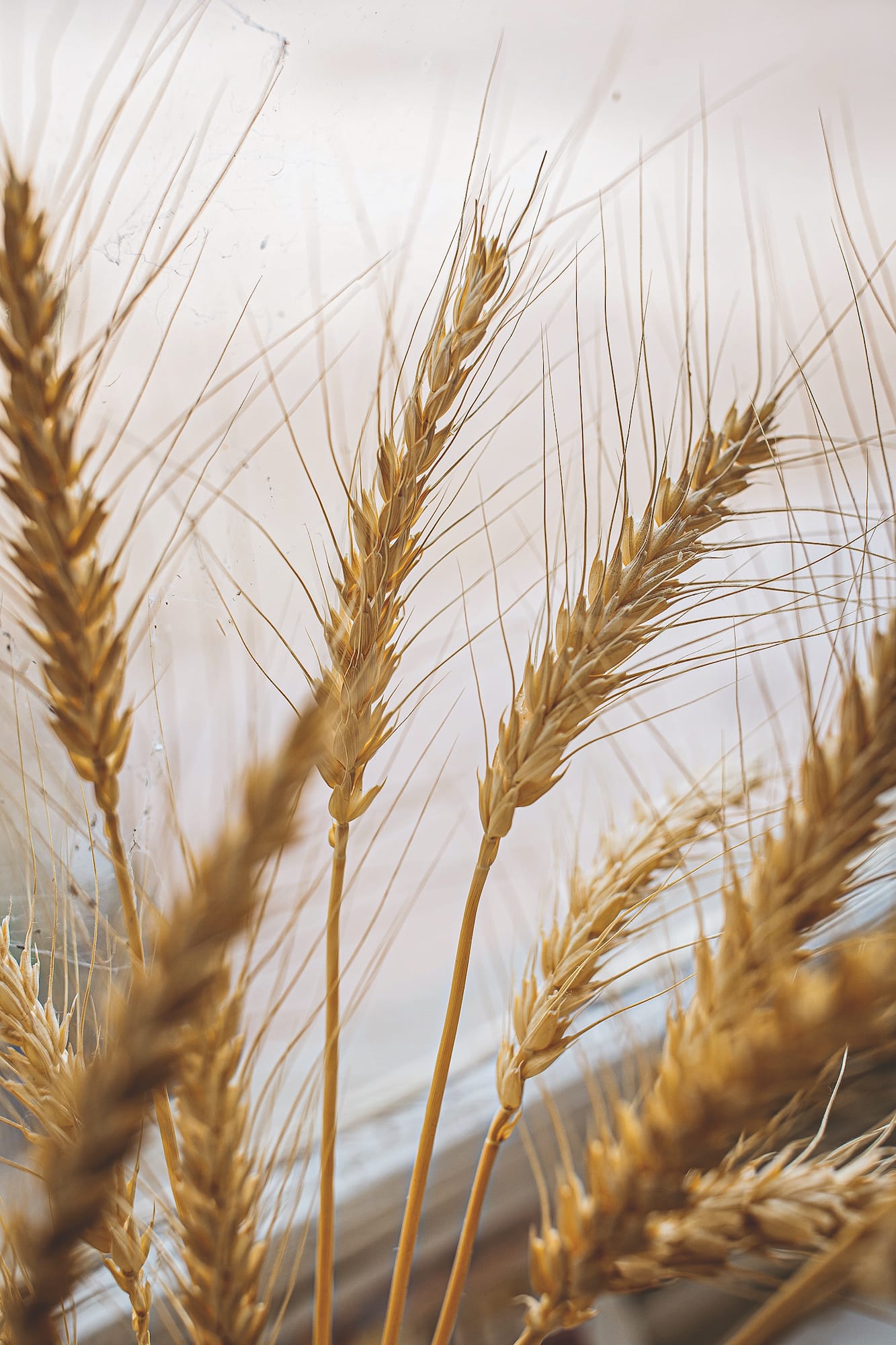
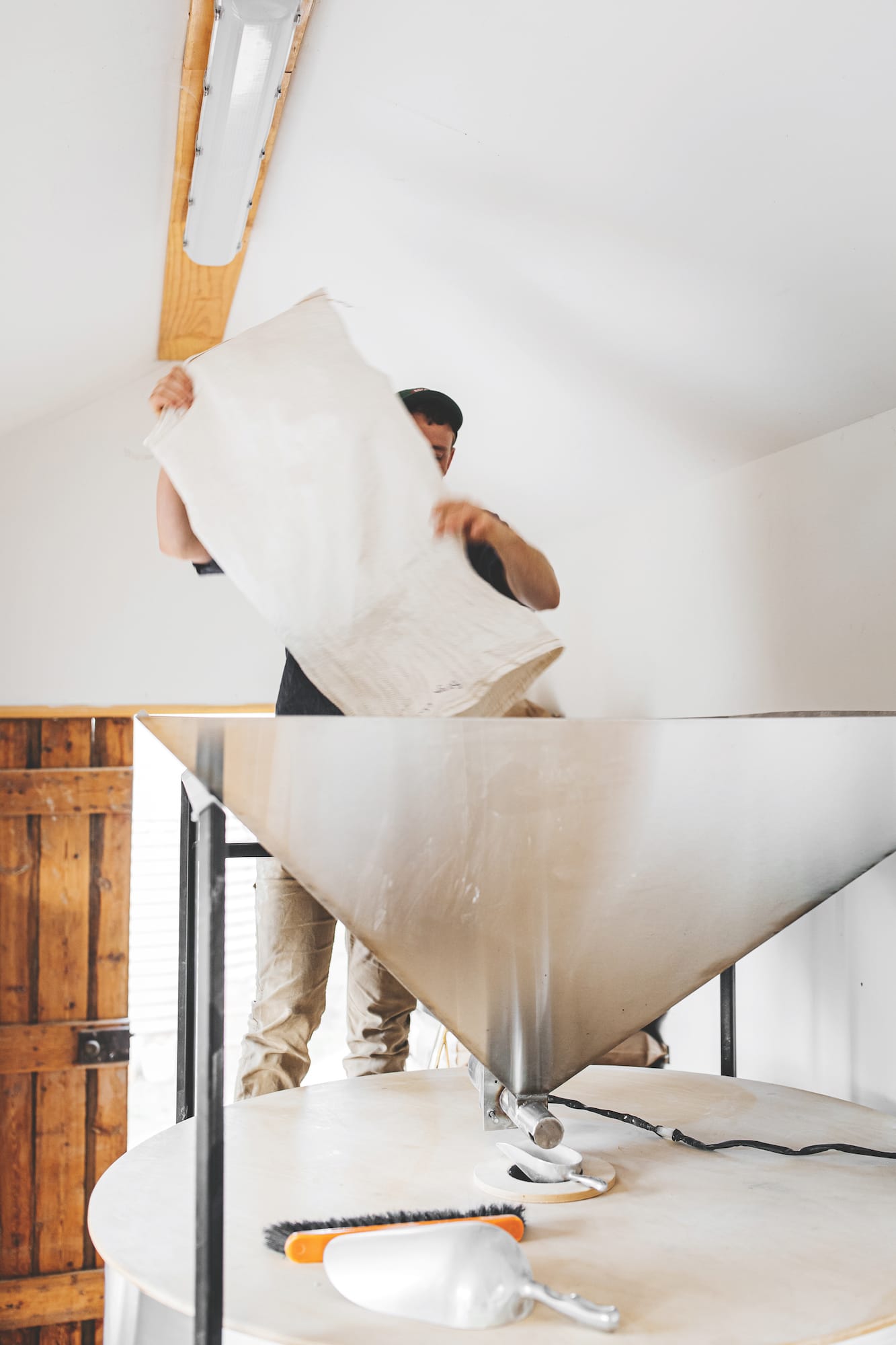
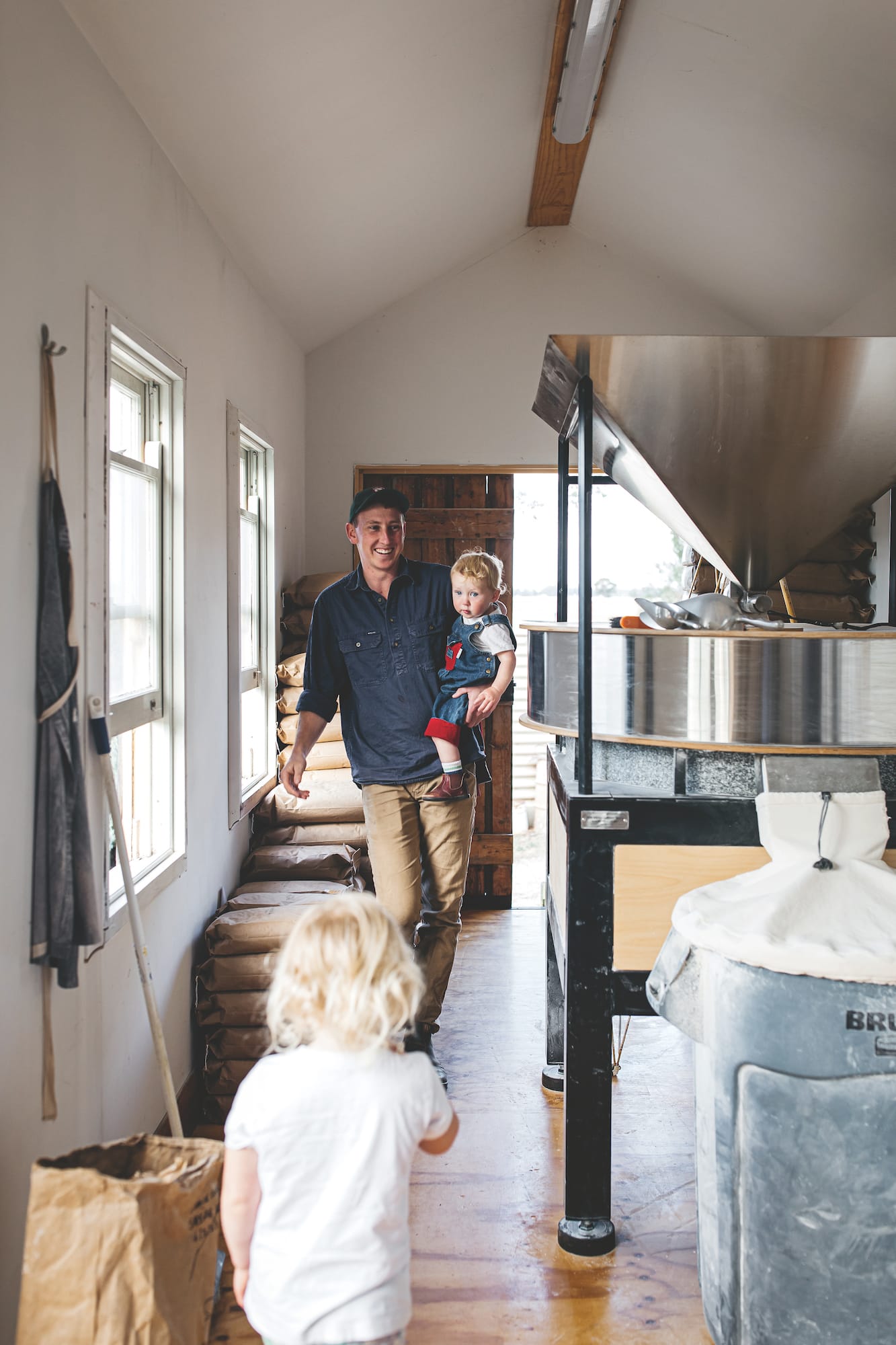
They are in that time of life when everything happens at once: a new business, a new family—they have two children: Mabel, four, and one-year-old Marlon—and Courtney has a blossoming art career on the
side as well, painting beautiful works in oils.
When she paints, in those snatches of time while the children are sleeping or when Ian takes them to the farm, Courtney ponders what it means to be raising kids and living on the land. ‘There are a lot of contradictions. It’s a responsibility owning land, and I guess I’m trying to think about how we best steward the land and produce something that can feed a community. I’m still working it out. Painting gives me time to think about those things.’
Something that Courtney and Ian are not worried about is competition. They believe there’s room in the market for smaller millers like Woodstock.
‘There’s so much demand for what we’re doing. We’ve got a waiting list of customers that I don’t think we could ever meet in the next five years.’
Courtney and Ian often field inquiries from other farmers wanting to do a similar thing. They don’t view them as the competition, but welcome them. The more the merrier.
‘It’s really exciting. I don’t think everyone should be doing it, because it’s hard work, but I think it is definitely an option. If we want rural communities to flourish, we need more people on farms and these farms need to be actual viable businesses not just land banks.
‘I also think that, like farming communities, the food system needs to be diverse. We need to have lots of small businesses. I think small businesses and small family farms are more accountable to their community because of those relationships they have. And I just think that’s important. We don’t want to have a monopoly on the flour in Australia. We’d rather see more people in our community eat our food and see other communities have a similar thing going in their locality. There’s a sense of pride, in knowing that there are people in your own community eating your food, rather than just sending it off in a truck and you never hear about it again.’
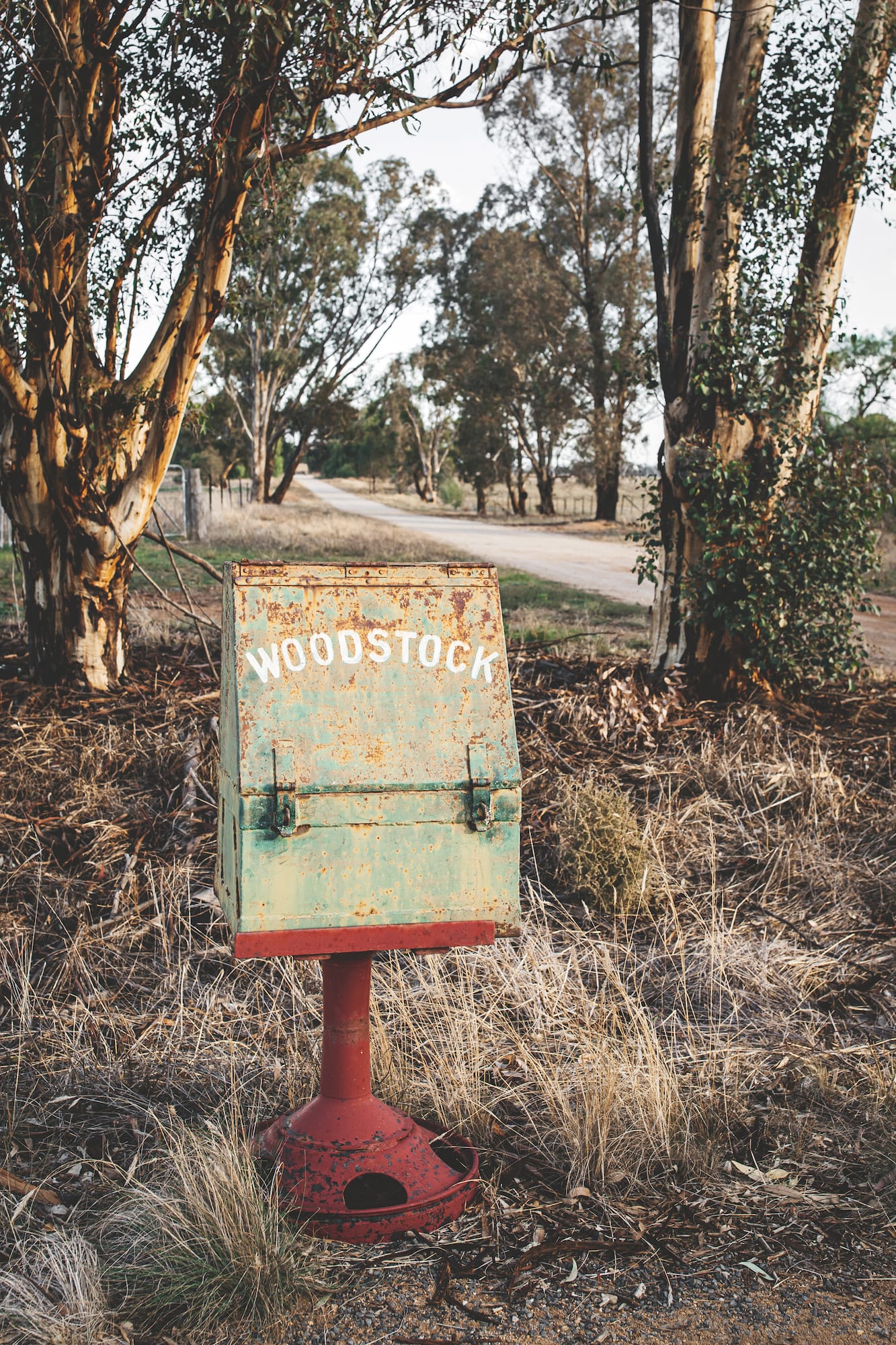
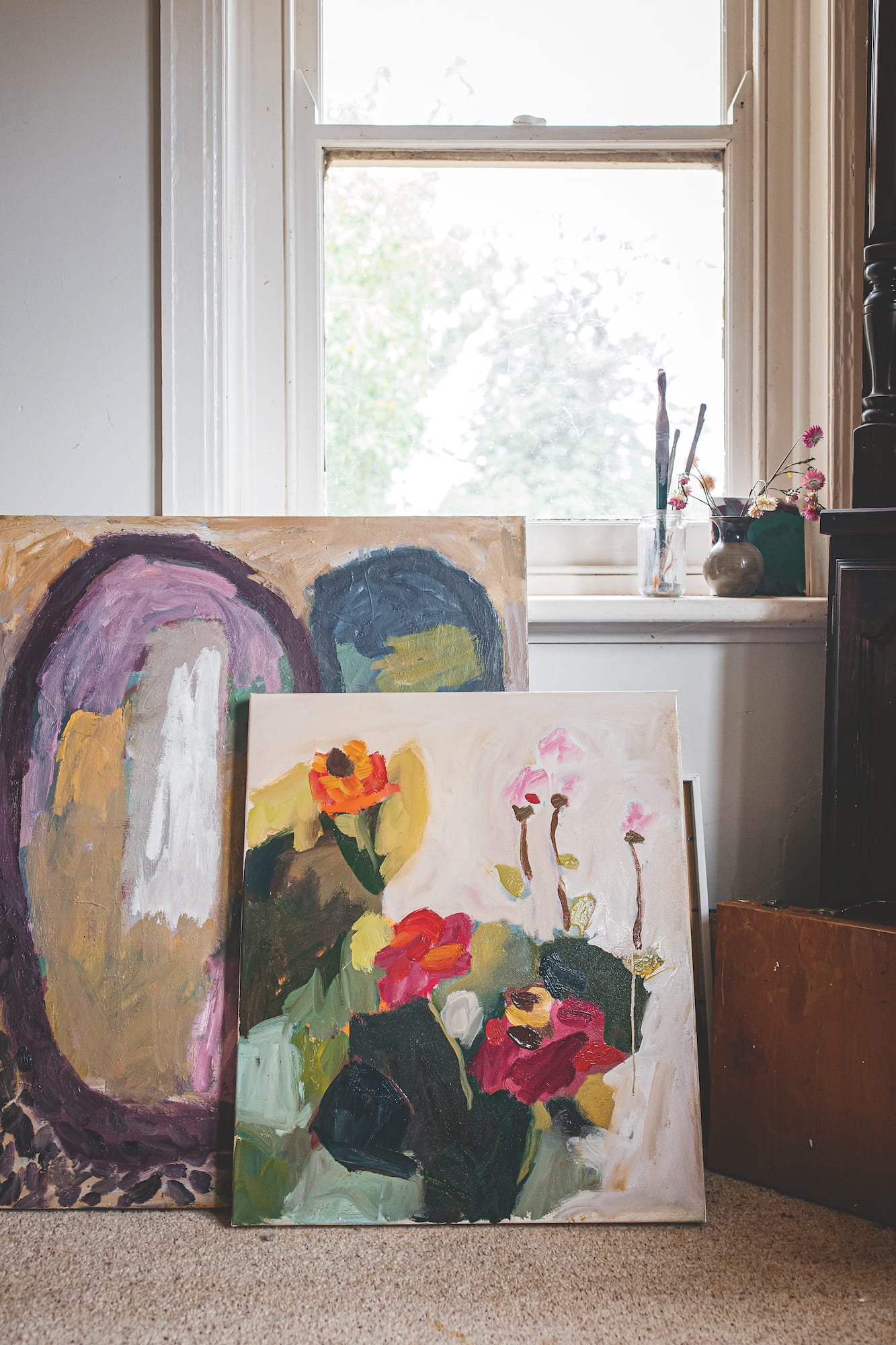
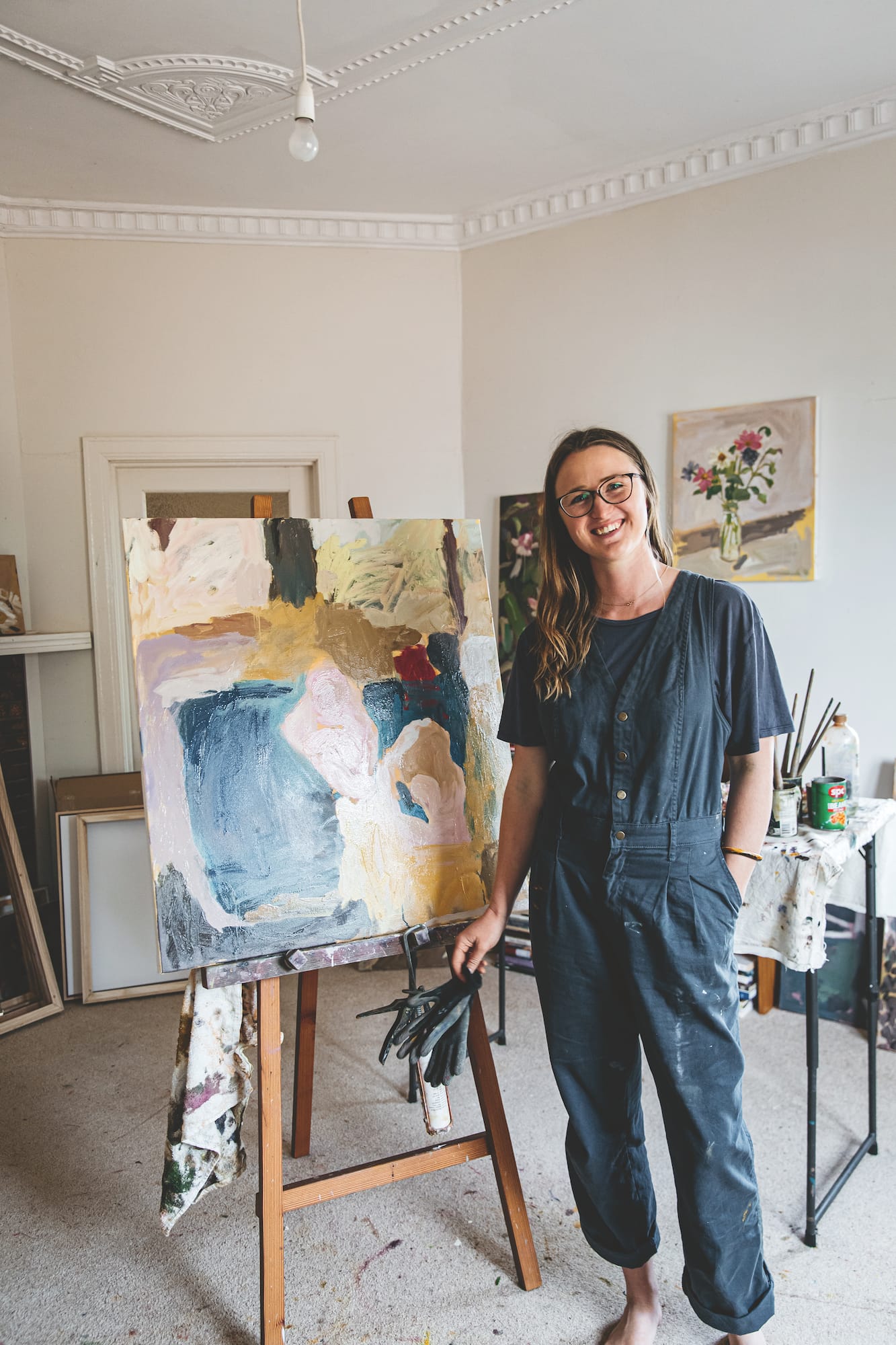
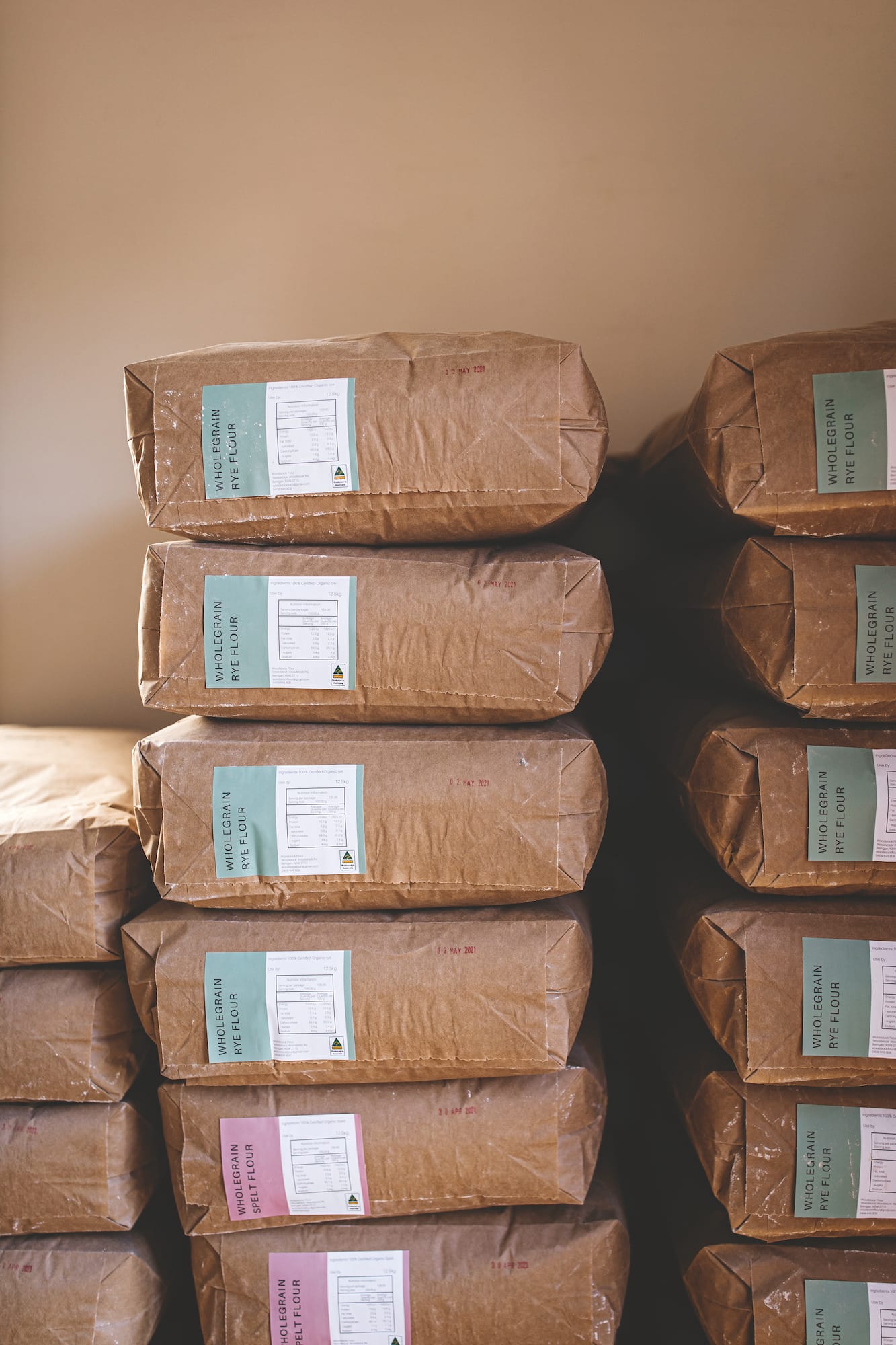
Ian and Courtney buy the wheat from Ian’s parents and run Woodstock as a standalone business. But it’s a business that makes a smaller parcel of farming land all of a sudden viable. Most family farms in the area are around 2000 hectares; that’s about the right size for a viable farming business. The Congdon’s farm, which has been organically certified since around the time Ian was born, is at the small end of the scale at about 800 hectares.
But for Ian and Courtney, for enough grain to mill about 50 tonnes of flour a year, they need about 100 hectares. This is a much more achievable goal for young farmers saving up for a deposit to buy a farm.
‘We wanted to do this to be farming, not milling flour. We’ve grown to love the milling and we’re passionate about it, but the goal is to be growing grain on our own farm and then experimenting with different regenerative processes.’
And their goal has been realised. They’ve just put down a deposit on a farm at nearby Rutherglen. Ian is building a second stone mill (his little brother is doing the steelwork) and they’ll set up the two mills on their new farm. They’ll continue to mill their family’s grains, and other grains—they’re collaborating with Bruce Pascoe’s Black Duck Foods to produce flour from native grasses—but now they can also grow their own grain.
The couple have helped me think about the importance of diversity. Diversity in grains and the way they taste depending on where they have been grown. Diversity of producers and manufacturers. The diversity of their business, which is made up of farming, processing and retailing (and a bit of painting). Then there’s diversity in communities—big farmers and small farmers, young and old—with many benefits for everyone involved.
I can’t imagine there not being a place for big mills in Australia’s flour market. But I do hope that small millers like Courtney and Ian pop up all across regional Australia. They will help us value our local terroir; show us ways of farming and manufacturing that are not commodity-based; and educate consumers to better value what we grow as a nation.
NEVER-FAIL SPONGE CAKE
While checking out the array of cakes in the show pavilion, Jenny Congdon (Ian’s mother) was chatting to a woman who said a sponge was the easiest cake to make. ‘She rattled off her “Never-fail recipe”,’ says Jenny. ‘I am always nervous of so-called “never-fail” things but she was right. With Woodstock flour it works every time.’
4 large eggs
120g caster sugar
Pinch of salt
100g Woodstock Rosella Wheat wholegrain organic cake flour
Jam and whipped cream, to fill
Icing sugar, to dust
Preheat the oven to 180°C.
Grease and line the base of a 20 cm round cake tin.
Beat the eggs, sugar and salt for 20 minutes. Lightly fold in sifted our until combined.
Pour batter gently into the prepared cake tin. Bake for 25 minutes or until lightly browned and cooked through.
Remove the cake from the tin and cool on a wire rack.
Split the cake horizontally, fill with jam and whipped cream and dust with icing sugar.
TIP You can use wholegrain or white flour for this recipe and it still makes a light, fluffy sponge.